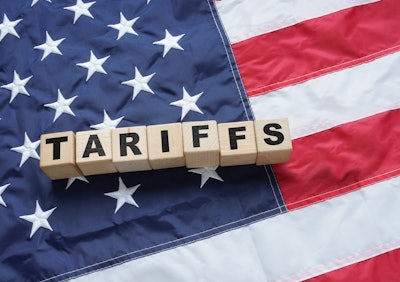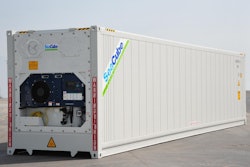
Food is an absolute constant. It is a universal necessity that transcends borders, cultures, and economies. No matter the circumstances of economic downturns, geopolitical tensions, or global pandemics, people need to eat. This simple truth underscores the critical importance of maintaining a resilient and efficient food supply chain.
However, the recent imposition of 25% tariffs on goods from Mexico and Canada has introduced new challenges that threaten to disrupt this vital system. While the food chain must survive and thrive, the burden of these tariffs is likely to fall heavily on the shoulders of U.S. consumers.
The food chain: A non-negotiable priority
The global food chain is an intricate, interconnected network that ensures the availability of food from farms to tables. It is a system that cannot afford to fail. From production and processing to distribution and retail, every link in the chain plays a crucial role in delivering safe, affordable, and nutritious food to consumers.
For the United States, Mexico and Canada are indispensable partners in this process. Mexico is the leading supplier of fresh produce, including avocados, tomatoes, and berries, while Canada provides essential goods like meat, dairy, and grains. These cross-border trade relationships have long been a cornerstone of the North American food chain, ensuring variety, affordability, and year-round availability for consumers.
The impact of tariffs on the food chain
The introduction of 25% tariffs on Mexican and Canadian goods has sent shockwaves through the food logistics industry. Initially, many Mexican financial analysts doubted that the tariffs would materialize, viewing them as a negotiating tactic rather than a definitive policy. However, the reality has proven otherwise, leaving businesses and consumers to grapple with the consequences.
The uncertainty surrounding these tariffs has created a tumultuous environment for the agriculture and transportation industries.
The resumption of a 25% tariff on U.S. agricultural imports from Canada and Mexico has added to the anxiety. These tariffs could affect a wide range of commodities, from oats and sugar to meat and cheese. For example, the U.S. dairy industry, which saw record-high cheese exports in 2024, could face significant challenges if Mexico retaliates with tariffs of its own.
The U.S. consumer: Bearing the brunt of the costs
The U.S. consumer is poised to take the brunt of the impact. With tariffs driving up the cost of imported goods, Americans can expect to see price increases on a wide range of food items. For example, the cost of avocados, a staple in many households, could rise significantly, affecting everything from grocery bills to the price of guacamole at your favorite restaurant.
This comes at a time when many Americans are already feeling the pinch of inflation and rising living costs. The added financial strain could force consumers to make difficult choices, such as opting for cheaper, less nutritious alternatives or reducing their overall food consumption. Such shifts in consumer behavior could have ripple effects throughout the food industry, impacting farmers, distributors, and retailers alike.
Broader trade tensions and their implications
The tariffs on Mexico and Canada are just one piece of a larger trade puzzle. The White House has also imposed tariffs on steel and aluminum imports, which could inflate the cost of metal packaging used for canned goods. This adds another layer of complexity for food producers already grappling with rising ingredient costs.
Moreover, the trade war with China has further complicated the situation. China, the world’s largest food export market, has retaliated with tariffs on U.S. agricultural products, including soybeans, pork, and dairy. These measures have disrupted export opportunities for U.S. farmers and food producers, creating additional uncertainty in an already volatile market.
Europe has also entered the fray, with the European Union imposing retaliatory tariffs on U.S. poultry, beef, dairy, and alcoholic beverages. These actions could deal a substantial blow to the U.S. alcohol industry.
Solutions for food importers: Compliance in a volatile landscape
For food importers, the current trade environment presents some unprecedented challenges. The Harmonized Tariff Schedule of the United States (HTSUS) has become a moving target, with reciprocal tariffs introducing a level of volatility never seen before. This creates significant difficulties for importers, including:
● Pricing uncertainty. Importers will struggle to price goods accurately if they cannot predict tariff shifts.
● Sourcing disruptions. Manufacturers may face disruptions in sourcing strategies as duty rates fluctuate based on global policy changes.
● Compliance complexity. Customs brokers and trade compliance professionals will need to handle a constant influx of classification adjustments, making manual tracking nearly impossible.
Businesses in the food industry need intelligent solutions that can manage these changes efficiently. Advanced, AI-powered compliance platforms offer real-time monitoring of tariff schedules and regulatory updates. By continuously tracking changes to the HTSUS and notifying users of relevant updates, these tools help importers stay ahead of compliance risks rather than reacting to them.
At the core of trade compliance is the HTS code, which dictates duty rates, additional tariffs like Section 301 and 232, IEEPA tariffs, and anti-dumping and countervailing duties (AD/CVD). Without accurate classification, businesses cannot properly forecast costs, manage supply chains, or ensure compliance with changing trade policies. Advanced compliance tools provide seamless product catalog integration and immediate compliance audits, helping importers identify:
● Out-of-date or inaccurate HTS Codes
● Missing or incorrect Partner Government Agency (PGA) requirements
● Products subject to antidumping and countervailing measures
● Chapter 99 tariffs and exemptions
● Free Trade Agreement (FTA) qualification
These platforms ensure that businesses can swiftly adapt to changes, minimize disruptions, and avoid costly noncompliance issues by proactively monitoring regulatory changes including tariff updates, CROSS rulings, and anti-dumping measures.
Food is a constant, and the chain must hold
Food is not just a commodity; it is a fundamental human need. The food chain is the lifeline that connects producers to consumers, and its survival and success are nonnegotiable. While the 25% tariffs on Mexican and Canadian goods present significant challenges, they also serve as a reminder of the importance of creating strong, collaborative trade relationships and building a more resilient food system.
As the United States navigates this new reality, one thing remains clear: the food chain must be prioritized. The cost of failure is simply too high. Investing in advanced compliance solutions helps guarantee that food remains a constant for all people regardless of the circumstances.




















